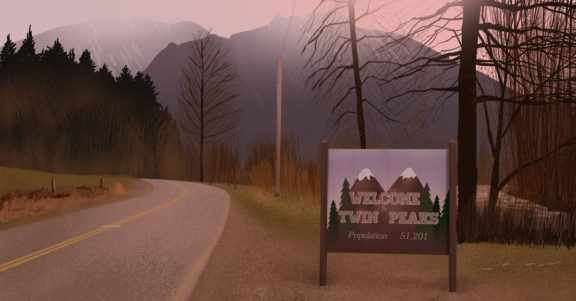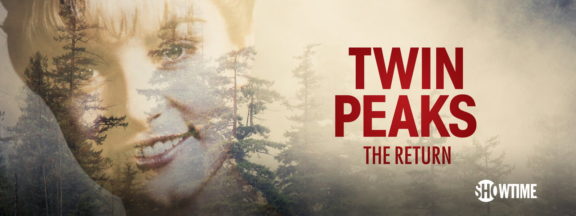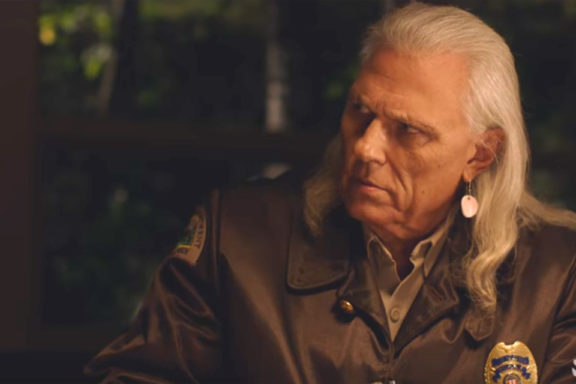
There is something deeply unsettling about watching Twin Peaks, from its surrealist imagery to its dark, almost macabre sense of humor that often comes with or without minimal warning. Perhaps it is the dialogues filled with cryptic and discomforting ellipses or the outlandish scenarios and crepuscular characters, but somehow David Lynch, the creator of the show, has once again recaptured the sense of awe and fear that surrounded the first series of Twin Peaks in the 1990s. Above all, it is brilliant in its cinematic sharpness and defiant weirdness. The characters seem to speak backward, and yet not entirely, due to the reversal of the middle syllables while maintaining the front and back syllables of the word, and there are people from another place. It defies direct categorization because it messily straddles the subtle demarcations between horror, comedy, and crime drama.
BU’s Cinemathèque screened Twin Peaks on Sept. 22nd. Given that there is plenty to deconstruct in the show, it was perfect for the participation-based event, where thought-provoking films and TV series are screened and later discussed.

(Hulu.com)
When given a chance to see Peter Deming, the cinematographer of the acclaimed series, it is little wonder that the auditorium of the Tsai Performance Center quickly filled with eager students and faculty members alike. Dr. Gerald Peary, the curator of BU’s Cinemathèque and a professor at Suffolk University, hosted the event and introduced the screening of the pilot episode by briefly explaining to the audience the history of the original Twin Peaks and how that shaped the sequel. Twin Peaks is a fictional town in Washington where everything is perfect on the surface. There are deep and dark secrets seething underneath; however, they eventually come to light with the death of Laura Palmer, a schoolgirl who is found near the river and wrapped in plastic. The FBI agent who is sent to investigate her death, Agent Dale Cooper, links her murder to that of Teresa Banks, a girl whose death he examined about a year ago. Agent Cooper ends up falling in love with Twin Peaks as he unravels the macabre mysteries of the town. As the show progresses, there is an abundance of suspects, and the viewers get the impression that no one in Twin Peaks is precisely innocent.

Thus, it was with dread and expectation that everyone who attended the screening settled in to delve into the creepy mystery that is Twin Peaks. The plot itself is the stuff of nightmares rather than dreams. It begins with a scene in the Red Room, with a confused-looking Dale Cooper confronted with a smug Laura Palmer, who in her backward-speech, assures him that she will see him again in 25 years and then freezes. Cue the title sequence after which ensues a terrifyingly creepy scene with the giant from the lodge. There are seemingly unrelated and weird scenes galore. For example, Agent Dale Cooper meeting some people in a random log cabin in the woods to the discovery of a gruesome double murder to Deputy Hawk getting a mysterious call from the log lady and the death of two people having sex in front of a glass box. It ended abruptly to segue into a Q&A session with the show’s cinematographer, Peter Deming, who had previously worked with David Lynch on “Mulholland Drive” and “From Hell.”
It was interesting that while Peary emphasized the surrealism of the series as he has taught classes on the subject of the film, Deming looked uncomfortable with this categorization and suggested that Lynch not set out to film the series with surrealism in mind.
“It is hard not to call it surreal,” said Professor Lindsey Decker, a film and tv professor at BU, “because of the pretty weird stuff that happens in the show, such as the humor that directly follows a scene where someone is decapitated.”
She said Lynch was not necessarily thinking of making a surrealist product but rather something that’s interesting to look at and that often comes off as being surreal.
For example, she referred to how cinematographer Deming achieved the shots of the opening credits, which was “swirling around on the floor, and then up to the curtains [because] David wanted something abstract.”
The opening scene is one of the most critical because it distinctly sets the tone for the rest of the series, which is one of extreme strangeness and an unshakeable sense of discomfort.
“Abstract is surreal when you put it into the context of normal human life,” she said, which perhaps accounts for the harsh tones of the show.
She discussed the inspiration behind the iconic Man from Another Place scene in the Red Room and how the creators of the show achieved the backward-speech.
“Regarding being inspired, David Lynch had the idea of wanting to introduce the supernatural to the show… and it was going to be a different dimension,” she said. She also said that it centers on the idea of “bad things that would be happening to the human people on screen would be because of bad influences coming from this supernatural dimension.”
As for the backward-speech, she said that the “middle of the word would be turned around so that it would be backward” but the front and last parts kept the same, which was achieved “with audio effects in post-production.”
When asked if Twin Peaks would survive today, Professor Decker compared it to the conundrum of Walter White in the AMC show Breaking Bad, and the anti-hero business to see how far he could push all the characters until he completely alienates them.
She said that “people would be patient enough for Twin Peaks but the marketing around the show [at the time] didn’t allow for that to happen due to pressure from ABC in the 1990s to solve the mystery.”
Compared to the other shows premiering alongside it then, Twin Peaks was vastly darker. For example, think juxtaposition of something as wholesome and cookie-cutter Americana as The Wonder Years and Home Improvement. Now, however, it is safe to say that modern audiences have developed a taste for the gothic and surrealist supernatural, as evidenced by the popularity of shows like American Horror Story, Stranger Things and the Walking Dead.
Twin Peaks may have been ahead of its time in the 1990s, but make no mistake, its quirkily terrifying storylines with supernatural twists will be more than welcomed now, given the popularity of other equally frightening shows. Twin Peaks is back, and perhaps with a different audience, will be relegated from cult classic to mainstream favorite. Only time will tell how the anti-heroes of sleepy Twin Peaks will fare.




